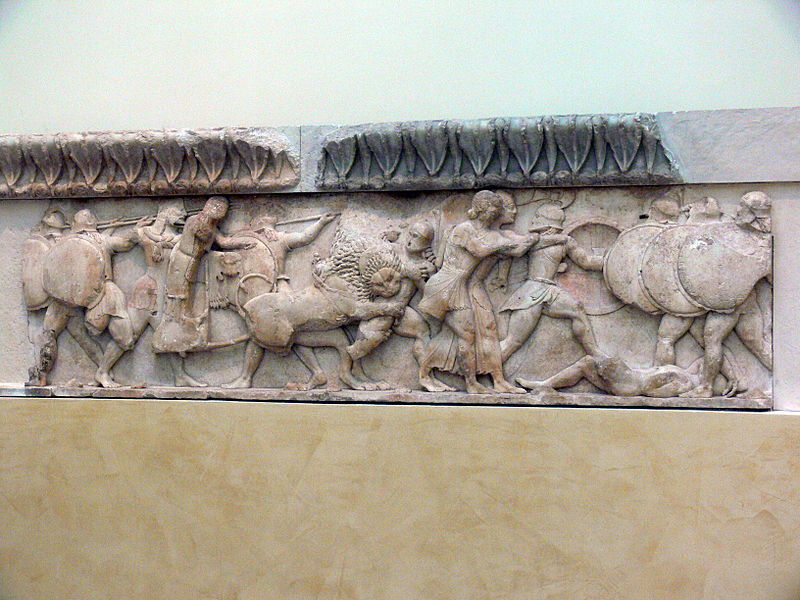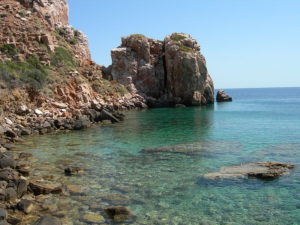

Sifnos (Greek: Σίφνος) is an island municipality in the Cyclades island group in Greece. The main town, near the center, known as Apollonia, is home of the island’s folklore museum and library. The town’s name is thought to come from an ancient temple of Apollo on the site of the church of Panayia Yeraniofora.
History
Sifnos was inhabited by human beings from at least 4000 BCE. Archeological evidence indicates the island was within the mainstream of Late Neolithic and Early Bronze Age Cycladic civilization. The island was very wealthy in ancient times, thanks to its gold, silver, and lead, which were being mined there as early as the 3rd millennium BCE. Proof of this is the treasury which the Siphnians built at Delphi in the 6th century BCE to house their offerings. According to Pausanias, these mines were obliterated by floods in ancient times, a disaster which some attributed to the people of the island suspending their tribute out of greed. Modern scholars suggest that some of the mines flooded because they had eventually been dug to a depth below sea level, while the majority of them, situated far from the sea, were probably exhausted. Remains of ancient mines, some dating back to prehistoric times, are still to be seen on the island, most notably at Ay. Sostis, and remains of ancient fortifications, dating from the third millennium to the sixth century BCE, have been found at Ay. Andreas, Ay. Nikitas, and Kastro. Another indication of Sifnos’s wealth is the fact that it was one of the first places in Greece to mint coins, beginning around 600 BCE, although the number minted does not seem to have been great, and the island of Aegina, which used Siphnian silver, seems to have developed a much greater export capacity in this form of the metal.

During the extensive Greek migrations which occurred beginning perhaps as early as the 12th century BCE, Sifnos was mostly populated by Ionian Greeks from Athens. The island appears only rarely in the subsequent ancient history of Greece. In the sixth century BCE it was invaded by pirates from Samos. In the fifth century BCE, Sifnos was an official member of the Greek defensive alliance formed to fight the Persian Wars. In the next century the island was briefly taken over by the Persians but liberated by a fleet sent by Alexander the Great. The verb “to play the Siphnian” appears in a fragment of Aristophanes, and is explained in the Suda alongside “to Lesbianize” as a reference to transgression.
Little is known of Sifnos during the Roman and Byzantine eras, though three Roman sarcophagi remaining in the streets of Kastro and a collection of 80 Byzantine coins in the Museum there testify to substantial continued population during those times. In the early 14th century Sifnos came under the power of the Italian or Spanish Hospitaller Januli da Corogna, who proclaimed the island independent from the Sanudi dynasty which then ruled most of the Cyclades area. The Corognas ruled Sifnos for over a hundred years; around 1440 as a result of a dynastic marriage power over the island passed to a Bolognese family, the Gozzadini, who ruled until 1617. Though both these dynasties became thoroughly Hellenized, they retained their Roman Catholic form of religion.

Notable figures from Sifnos in modern times include the educator and revolutionary leader Nikolaos Chrysogelos (1780–1858), who served as Greece’s Minister of Education, and the chef Nikolaos Tselementes (1878–1958), who wrote a classic cookery book still used in Greece today. The island’s rich clay veins, sunny weather and temperature have made Sifnos a capital of pottery in the Aegean, with unique jars and pots that are a “trademark” of the island. They are typical of the Sifnian everyday life, such as ashtrays, cooking and food vessels, “masteles”, “foufoudes” (kind of chimneys) etc. Locally, ‘Sifnios’ was a variant word for potter. The oldest potteries were found in central regions such as Artemon and Ano Petali to avoid pirate attacks.
Source Wikipedia.
Be the first to comment